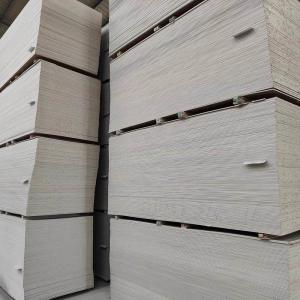

Add to Cart
Gypsum Plaster Board, also known as drywall or wallboard, is a common building material used in the building industry for walls and ceilings. It consists of a gypsum core sandwiched between two layers of thick paper or fiberglass felt. The gypsum core is made from a mixture of gypsum powder, water and additives, which is then poured onto paper or fiberglass felt to form a sheet.
Gypsum Plaster Board is also a versatile material that can be used for a variety of purposes, such as sound insulation, fire and moisture resistance. It can be painted, textured, or decorated to meet the aesthetic requirements of the room.
1. Fire resistance
Since gypsum itself is a fire resistant material, gypsum
plasterboard can also be fire resistant for up to four hours. The
reason behind this is the presence of water in gypsum offerings.
When water comes in contact with fire, it starts evaporating. It
helps the board to form a protective layer which helps to prevent
the fire from spreading over a period of time.
2. Non-combustible
When a gypsum board comes in contact with fire, it starts the
process called calcination. Calcination is the process by which the
board dehydrates, helping it to form an additional layer. It makes
the wall non-combustible for several hours and always remains at
room temperature.
3.Damp Proof / Waterproof Gypsum Board
The green appearance is mainly made of building gypsum with an appropriate amount of fiber reinforcing agent and waterproof additives.
Suitable for wet and semi exposed areas, with a tileable surface.
Scope of application: kitchen, bathroom, laundry, garage, bathroom, laundry, humid environment, etc.
4. Acoustic properties
Gypsum board has an inherent degree of acoustic insulation. These
are more effective compared to conventional walls of the same
thickness. This is because they contain sound interruptions and
reduce reverberation.
For example, a plasterboard of around 60 mm is as effective as an 85 mm masonry wall in terms of sound insulation. Users can also choose to use acoustic gypsum board to further improve performance.
Gypsum Plaster Boards Competitive Advantages
Item | Standard Value | Test Value | ||||
Density (kg/m²) | — | Thickness | Regular | Fire Resistant | Water Resistant | |
≯ 9.5kg/m² | 9.5mm | 7.5 | 7.5 | 7.5 | ||
≯ 12.0kg/m² | 12mm | 9.5 | 9.5 | 11.5 | ||
Flexural Strength(N) | Parallel | ≮ 360 | 9.5mm | 560 | ||
≮ 500 | 12mm | 700 | ||||
Cross | ≮ 140 | 9.5mm | 180 | |||
≮ 160 | 12mm | 240 | ||||
Surface Paper Sticking theCore Material | Unexposed | Unexposed | ||||
Stability with Fire (Min) | Fire Resistant | ≮ 20 | / | / | >20 | / |
Water Absorption (%) | Water Resistant | ≮ 10 | 9.5mm | / | / | 6.8 |
12mm | / | / | 4.2 | |||
Radioactivity | Internal | IRa≤1.0 | <1.0 | |||
External | Ir≤1.3 | <1.0 | ||||
Note | Executive Standard : GB/T 9775-2008 | |||||
Ordinary gypsum board has a wide range of applications
Used for hotel, restaurant, shopping mall, office, theater, studio, cinema and school and other buildings partition wall application, ceiling application.
